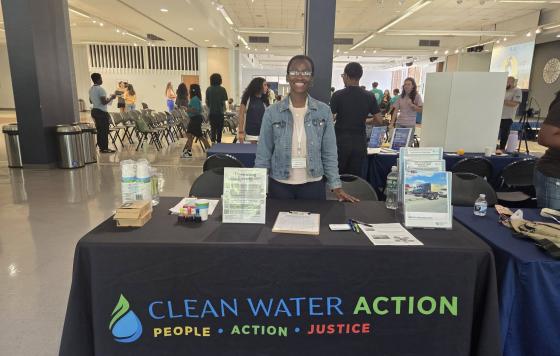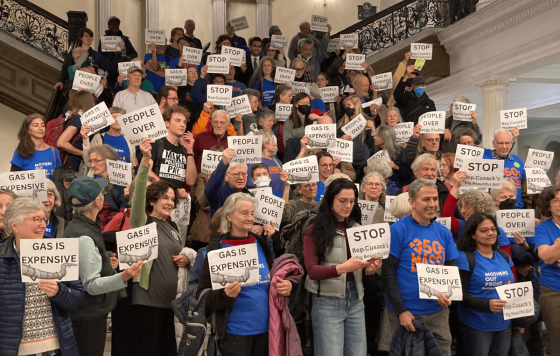
Climate change is at the forefront of the political sphere as we head into 2021 and with the new administration. However, climate change is complex and can be overwhelming. While real solutions will require action on a global scale, you can make small changes in your day-to-day life to lower your impact on the environment.
1. Know your carbon footprint.
A carbon footprint is the total amount of greenhouse gas emissions that come from the production, use of, and end of life of a product or service. This includes carbon dioxide, methane, nitrous oxide, and fluorinated gases (among other gases), which are commonly produced by humans and agriculture. Calculate your carbon footprint by visiting this site.
Knowing your carbon footprint can help you pinpoint areas where you can make easy, small changes.
2. Travel less.
2020 was the year of many life changes, including traveling a lot less because of the global pandemic. Road travel was 19% lower in 2020 than in 2019, and air travel fell by 68% in 2020. Even though the CO2 change cannot readily be observed, changes in the concentrations of air pollutants can be used to test the veracity of the bottom-up emission reduction estimates. A decline in NO2 has been observed globally and in several countries and cities as well as a decline in CO2 emissions. We need to keep this trend going. Travel will always be necessary, but here are a few ways to lower your environmental impact:
- Drive efficiently – go easy on the gas and breaks, along with using cruise control and regularly servicing your car to make sure that it’s running more efficiently.
- Check your tires – low tire pressure can negatively affect your gas mileage.
- Limit your use of air conditioning and intensive city driving.
- Don’t weigh down your car – limit extra things when packing your car.
- Carpool when possible – this splits car emissions and lowers the number of cars on the road, making travel more efficient all around.
- Fly less if possible.
3. Eat less meat and focus on sustainably grown meat.
Food systems are complicated but cutting down on meat, in particular red meat, is better for the environment. Factory farming contributes greatly to climate change by increasing greenhouse gas emissions, increasing toxins to our environment, and harming nutrients in our land.
- Swap out a few meat-heavy meals for vegetarian or vegan recipes to help significantly reduce your environmental impact along with paying attention to where your meat is coming from.
- Try to purchase locally sourced, 100% lifetime grass-fed beef when possible.
4. Create less waste.
On average, Americans waste around 40% of the food that they buy. To lower your food waste and save money, you can:
- Take stock of your fridge regularly. Create a grocery list beforehand and stick to it while shopping so you don’t overbuy or purchase things you don’t need.
- Be wary of bulk. It may seem like a good deal but you may not end up eating it all before it goes bad.
- Plan out your meals. Don’t cook more than you can eat and adapt recipes to your needs.
- Get creative and reuse leftovers instead of tossing them.
- Freeze your food if you are not using them soon. This extends the life of your food
- Take home oversized restaurant services but try to only use environmentally friendly dishes and dinnerware.
5. Small changes start at home.
American homes on average distribute energy as 20% of energy to heat, 13% to hot water, 11% to cooling, and the remaining on appliances. Making small changes can make a big difference:
- Keep the temperature stable in your home. Turn down the heat, use a programmable or smart thermostat if you can, and keep blinds closed.
- Turn down your water heater to 120 degrees,
- Remember what your parents told you: turn off lights and appliances when you are not using them. Unplug if possible to reduce even more energy.
- Stream movies through a smart TV, not your game console. Game counsels use about 10 times more electricity since they are not optimized to play films.
- Use a laptop. Desktops use a lot more and use a constant source of electricity.
- Replace lights with LED lights since they use up to 85% less energy and last up to 25% longer.
- Pay attention to your fridge temperatures. The US Department of Energy recommends around 35 – 38 degrees for the fridge and 0 degrees for freezers. Replace old fridges if possible too. This will save you money and help your carbon footprint.
- Seal your home well and insulate it to keep temperatures stable. If you have an older home, be sure to re-insulate your home since many used degradable insulation. For example, before 1940, many homes used sawdust and newspaper for insulation.
6. Recycle more and create less trash.
Americans generate roughly 258 million tons of trash per year. Of that, 169 million tons end up in landfills and incinerators. Here are some tips to make sure that your waste ends up in the right place:
- Look for your plastic numbers to figure out what can be recycled. Check your city or state’s website for accepted numbers.
- Empty and rinse food containers before recycling. Dirty containers can spoil a whole batch of recyclables.
- In addition to plastics, recycle paper, steel, and tin cans.
- Always consider if you can repair or reuse items before throwing them away.
- Donate working electronics. If you cannot donate, many electronic stores and municipal recycling centers accept used electronics.
7. Buy less.
Inconsumable goods tend to plague our spaces and build up over time. Consider the following before your next shopping trip:
- Dress sustainably by looking for fair-trade, shopping vintage/second-hand, considering low impact environmental fabrics, and donate old clothes.
- Shop sustainable by using a reusable bag when you can, skipping packaging, and investing in quality products that last.
The above list may seem overwhelming but even doing one or two things can create major changes in your environmental impact and lower your effect on climate change. Together, we can slow climate change and make sure that our water stays safe and clean.


